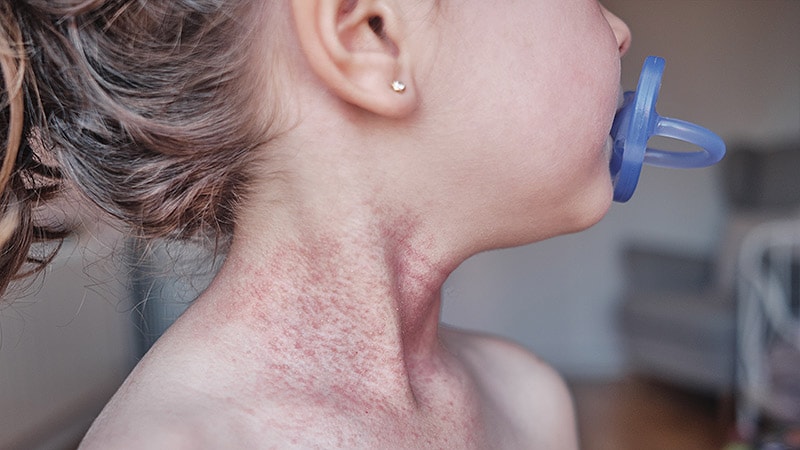TOPLINE:
Children with early-onset atopic dermatitis (AD) were nearly twice as likely to develop pediatric uveitis as were those without the condition. The elevated risk was independent of a history of autoimmune disease or the use of dupilumab. Children with severe AD had an even greater risk for uveitis than those with milder disease.
METHODOLOGY:
- Researchers conducted a cohort study to evaluate the risk for pediatric uveitis in children with early-onset AD.
- They analyzed aggregated electronic health records of 114,889 children with early-onset AD and 114,889 matched controls from 69 healthcare organizations in the United States.
- Children included in the analysis were diagnosed with AD before age 2 years and had at least one follow-up claim related to the condition within a year of their earliest diagnosis claim. They also had to have received at least one treatment with oral antihistamines, topical corticosteroids, or topical calcineurin inhibitors.
- Patients were classified as having severe AD if they received certain treatments within one year of the earliest diagnosis claim.
- The primary outcome was the hazard ratio (HR) for developing pediatric uveitis in patients with early-onset AD vs matched control individuals.
TAKEAWAY:
- Children with early-onset AD were nearly twice as likely to be diagnosed with pediatric uveitis than were those without the condition (HR, 1.92; 95% CI, 1.38-2.66); the risk for iridocyclitis but not for chorioretinal inflammation was elevated in children with early-onset AD.
- Patients with severe AD had an even greater risk for pediatric uveitis than those with milder forms of the condition (HR, 3.64; 95% CI, 2.00-6.66).
- The risk for pediatric uveitis remained elevated in children with early-onset AD, regardless of their use of dupilumab or the presence of autoimmune conditions.
IN PRACTICE:
“These findings support the potential need to consider ophthalmologic monitoring in children with early-onset AD to try to detect and subsequently manage uveitis if it develops,” the authors of the study wrote. “These findings support an interdisciplinary approach, involving dermatology, ophthalmology, immunology, and pediatrics, that might contribute to optimized care for both AD and its associated ocular complications.”
SOURCE:
This study was led by Yung-Yu Chu, MD, of the Chi Mei Medical Center in Tainan City, Taiwan. It was published online on April 3, 2025, in JAMA Ophthalmology.
LIMITATIONS:
Reliance on the International Classification of Diseases, 10th Revision, codes limited the assessment of diagnostic details, and the retrospective design of this study introduced inherent biases and data collection limitations. The study was not population-based and may have limited generalizability to clinical settings. Low event counts for certain uveitis subtypes such as retinal vasculitis, sympathetic uveitis, and panuveitis prevented statistically stable results and reliable estimates for these specific conditions.
DISCLOSURES:
No sources of funding were reported. The authors reported no relevant conflicts of interest.
This article was created using several editorial tools, including AI, as part of the process. Human editors reviewed this content before publication.
Source link : https://www.medscape.com/viewarticle/early-onset-atopic-dermatitis-raises-uveitis-risk-kids-2025a100084s?src=rss
Author :
Publish date : 2025-04-04 09:35:00
Copyright for syndicated content belongs to the linked Source.
